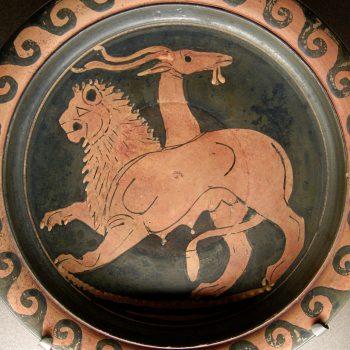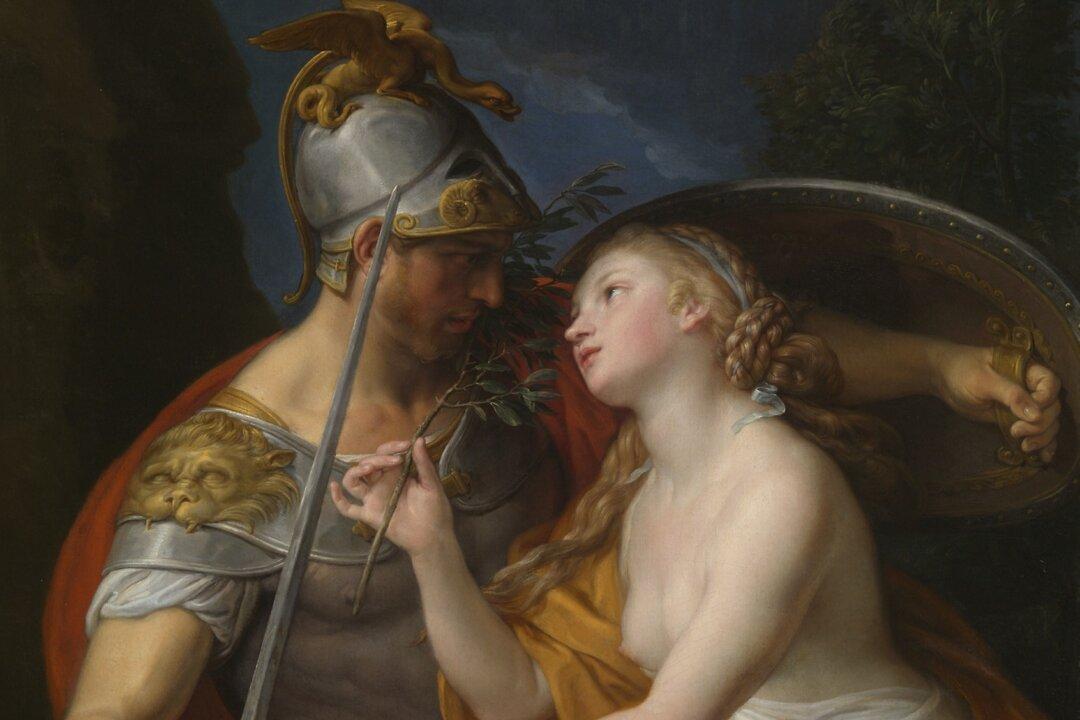The allegorical painting of Italian 18th-century artist Pompeo Batoni reflects a much-needed understanding of the relationship between peace and war for a contemporary audience. In “Allegory of Peace and War,” Batoni depicts symbolic representations of Peace as feminine, soft, and graceful; and War as masculine, strong, and fierce. It is the nature of their communication that is the most interesting.

The Chimera on a Apulian plate, circa 350–340 B.C. Musée du Louvre





